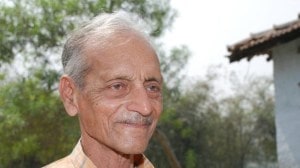US welcomes Indian N-experts
In a positive turn to the Indo-US dialogue on civilian nuclear issues, Washington has offered to accept an Indian representative from the At...

In a positive turn to the Indo-US dialogue on civilian nuclear issues, Washington has offered to accept an Indian representative from the Atomic Energy Regulatory Board (AERB) to spend six months with the US Nuclear Regulatory Commission (NRC). There is no strict bar on the number of representatives.
The offer was made by Jeffrey S. Merrifield, a visiting Commissioner of the NRC, who has been in the country for the past week and has held discussions with AERB officials and even toured some of India’s nuclear reactor sites.
‘‘We have proposed that a representative of the AERB come to the US for about six months. This will be a valuable tool in learning and exchanging information on how the reactors work and the care being taken to maintain these reactors,’’ he told The Indian Express in an exclusive interaction.
Merrifield said the US had such an arrangement with a few other countries and the measure will help enhance the prospects of the dialogue between the two regulators, which has been underway within the framework of the Next Steps in Strategic Partnership (NSSP). ‘‘It can be one or two or more representatives also,’’ he added.
This was the fifth such bilateral interaction at the level of the regulators. While his initial discussions were in Mumbai, Merrifield today met Foreign Secretary Shyam Saran apart from holding discussions with Meera Shankar, Additional Secretary in the MEA.
During his week-long stay, Merrifield also visited the Bhabha Atomic Research Centre, the Tarapur Atomic Power Station and the Rajasthan Atomic Power Station. ‘‘It was quite impressive…this was a very positive visit…we made very good progress in relation to nuclear safety.’’
Merrifield has visited all the 103 reactors in the US and says he has seen nearly half the reactors of the world. In that context, he felt that the people working on Indian reactors had ‘‘real passion’’ for what they were doing and that had taken good care of their reactors. Both sides also agreed to include in their agenda the topic of safety of reactors from disasters like tsunami.
But asked whether he would guarantee they are 100 per cent safe, he said: ‘‘No, I wouldn’t say that about any plant outside the US. What I saw was positive. A lot of care is provided to ensure safety, but I can’t give a guarantee. But I also have no reason to believe that they are not running very safely.’’
India, for its part, conveyed its willingness to join the US-led programme to make Generation IV reactors. Merrifield said the regulatory body did not directly deal with this but he will convey this ‘‘strong desire’’ expressed by New Delhi to his counterparts in the US Department of Energy, which runs the programme.
On the possibility of India joining the International Thermonuclear Experimental Reactor project, he said it was unlikely for the membership to expand till a decision is taken on the location of the project. There are sites in Japan and France which are in contention.
But the growing interaction between India and US on civilian nuclear issues, Merrifield said, augured well for the NSSP to move forward. The dialogue between the regulators, he said, had laid a ‘‘strong foundation’’ for both countries to take the NSSP process ahead through a series of reciprocal steps.
Meanwhile, Merrifield assured that Washington was doing its best to let Indian nuclear scientists visit the US for research purposes. Though matters have become difficult after 9/11, he said, the US will try to ‘‘improve the processing of requests from India’’ so that more Indian scientists could travel to US.





- 01
- 02
- 03
- 04
- 05


























